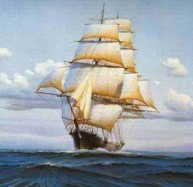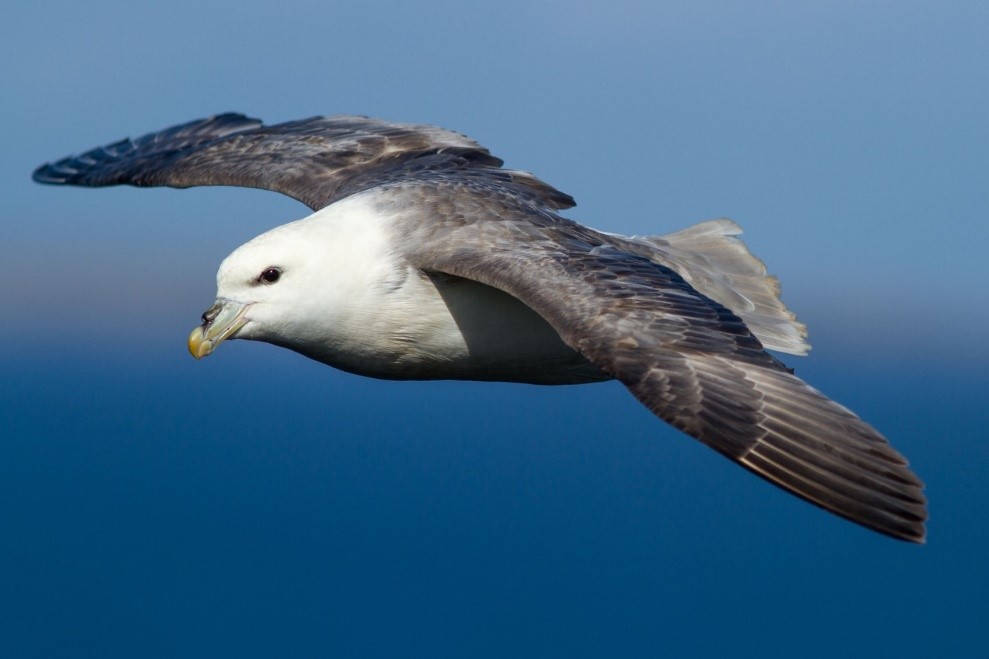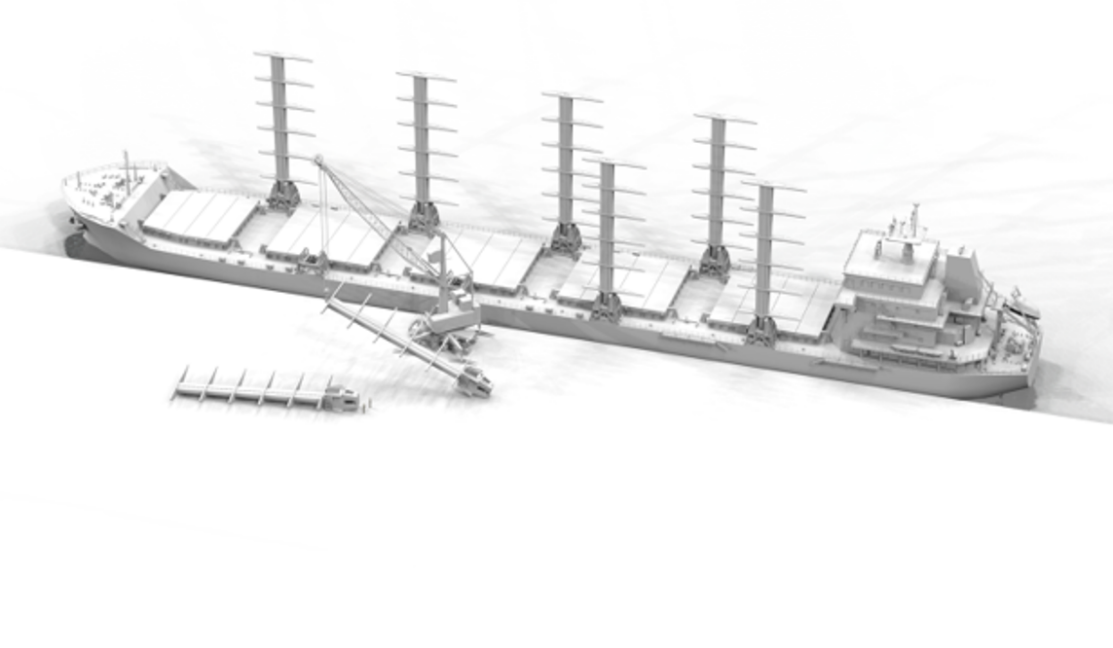During the 2019 SAFETY4SEA London Conference, Ms Diane Gilpin, Founder/CEO, Green Shipping Alliance, highlights the benefits of wind technology for the shipping industry. Ms. Gilpin says that the abundance of wind is a great, proven source of propulsive energy, and it can support significant GHG emissions reduction.

This is probably my favourite ship in the world. She is called the Flying Cloud, she was built in 1850 as a direct response to commercial demand from the gold rush. Resources were required urgently to be taken from New York to San Francisco in the shortest possible time. This ship combined the latest technology and knowledge and she broke the world speed record on her maiden voyage. She continued to break the speed record every single time she sailed, and the last time that she took the world sailing speeding record was in 1854 and that record stayed for 109 years. That is an extraordinary testimony to the technology in that vessel. What happened was the Industrial Revolution and the internal combustion engine came along and interrupted the development of wind technology. I am not complaining about that, but we cannot continue to rely on heavy fuel fossil fuels and so we have got to rethink the way we operate in the world.
I think the Flying Cloud is a bit more of a feature ship for me, because her greatest record was set when she was being navigated by a woman. That is a lesson we could learn from.

Let me introduce to a fulmar. She has the ability to fly 11,000 miles for lunch, get back to her nest with a net calorie gain at the end of it. She does that through superb design and extraordinary knowledge of how to use natural systems of wind and currents. She uses more calories sitting on her nest than she does when she goes to work.
The point of understanding the fulmar is that we humans have a lot to learn, and plenty of new ways of looking at the world. We think we have got to the extent of our knowledge and capability and I do not think we have even scratched the surface yet. We have got the latent knowledge in all of the sailing technology that the Flying Cloud represents and we have got multiple opportunities to learn from nature.
To my own personal experience, since I have worked in Formula 1 and yacht racing; it is all about design. How do we design for the future?
It is really important that we do not think that we are going to be designing the Cutty Sark or the Flying Cloud. What we design for modern merchant shipping will be as different as a Model T Ford is from a Tesla. We are thinking about 21st century technology using traditional energy.
In the way that exactly the same energy was being used to power the old windmills, as is now being used to power 12 megawatt offshore floating wind turbines. Let’s not get stuck on the idea that we are going back in time. We are using modern materials and modern technology to harness free, abundant energy.
Environment, engineering, economics
Environment
When we think about environment, we think about it in two ways, as either ecology, which is about natural systems. We’re here in the Hellenic Centre today, the etymology of the word ecology comes from the Greek word OIKOS, which is home or family. That is what the ecology is for us. It is our home. Without looking after it, without caring for it, we will not be able to conduct commerce. So I do not think there is a trade-off between one thing and the other, I think we need to be smart.
But what we really need to be doing is to be thinking about our commercial environment. I am not daft, your not daft, we all know have a problem. Shipping has multiple challenges and I am not suggesting that we can just wave a magic wand and everything is going to be wonderful. The industry contributes a significant chunk of global GHG emissions. In response to the impending regulation, what we can do, now the smart people do, is to start to thinking now, about what it is we can do.
The finance industry is struggling to come to terms with how we finance non-compliant or high sulphur fuel costing vessels. Let’s not say it’s somebody else’s problem. Let’s take a grip and make it our challenge and solve it.
Engineering
Engineering is not a problem if you ask the right questions to the right people.

This was one of our first efforts, after having done a bit of research about what industry might find useful. You can stick wind on any commercial ship and save fuel. It is getting it in and out of port, getting the cargo on and off and commercial issues that are quite difficult. But if you ask the right questions to the right people, then you can find solutions.
That is what we are doing right now. We are working collaboratively across an ecosystem within shipping. What we are doing is understanding from the ship-owners perspective what is going to work for them; understanding from a cargo-owners perspective what is going to work. Taking that design brief back to really smart naval architects, marine engineers, mechanical engineers to make sure it’s affordable, efficient and most importantly, safe.
Economics
Let’s think about the economics of wind. Why would we go to all of this trouble? It’s not because we are tree-huggers. It’s not because we want to be green for the sake of it. What really matters is that the wind is free, abundant and it is exclusively available to any vessel that is equipped to harness it. I recognize that is not going to be every ship in the fleet, but it is a significant number, it is retrofittable and it’s do-able now.
People will say to me ‘you cannot predict the value of the wind’ and I say you can because we can do that through big data analysis, through digital systems, and I think it is probably easier to predict the value of the wind than the cost of any fuel as we move toward 2050.
Wind will always be free. So we need to design the tech to harness the maximum amount of it as it significantly reduces the fuel cost burden for the ship-owner or operator. It is going to increase the CAPEX, but it puts certainty into the OPEX. Then you have the opportunity to start being creative around the way that the OPEX and the CAPEX work together.
In the renewable energy industry, we have seen that all sorts of lease financing packages, based on that certainty, are available and being used to maximum commercial effect. We are going to be able to use wind to hedge around those uncertainties that worry anybody in business.
To summarize, the cost of fuels, whether they are fossil or bio, are tethered to commodity markets and markets are inherently volatile. The price of wind is only dependent on technology and we have seen over and over that innovation starts at high cost and then goes down. We know that this is what happens; we have seen it with wind, solar, mobile phones, laptops and computers.
However, here we have got a win-win situation as we have more cost certainty and that gives the opportunity for shipping businesses to better manage their future. Also, we’ve got greater fuel autonomy, which reduces the risk for ship-owners and operators, and that gives a better ability to fix long-term charters. By happy accident, it also happens to be clean. So if every suitable ship in the world could carry the wind at today’s technology levels, we would see an overall reduction in GHG emissions of around 1%. That’s about half of shipping’s 2050 problem.
Concluding, I would urge us to not worry too much about all of the details. Think big, think ambitiously, work together, be collaborative and we can a win-win-wind future!
Above text is an edited version of Ms. Diane Gilpin’s presentation during the 2019 SAFETY4SEA London Conference.
You may view her presentation herebelow
The views presented hereabove are only those of the author and not necessarily those of SAFETY4SEA and are for information sharing and discussion purposes only.
 About Diane Gilpin, Founder/CEO, Smart Green Shipping Alliance
About Diane Gilpin, Founder/CEO, Smart Green Shipping Alliance
Diane Gilpin leads The Smart Green Shipping Alliance, SGSA, a collaborative industry initiative designed to develop technically, commercially and environmentally superior systems solutions for shipping.
SGSA is leading a collaborative technical feasibility study, from which it will prepare the Business Case, for retrofitting dry bulk ships with wind-assist devices. Project partners include Drax, the UK’s largest renewable power generator, and shipowners, UltraBulk.
SGSA accelerates commercially viable solutions through transferring technology and knowledge from offshore yacht racing, F1, renewable energy, aviation and defence to complement deep commercial maritime expertise. It includes the Institution of Mechanical Engineers (IMechE), Humphreys Yacht Design, Lloyds Register, Group Partners, University of Southampton, Willis Towers Watson, Cammell Laird and Capital Law.

































































